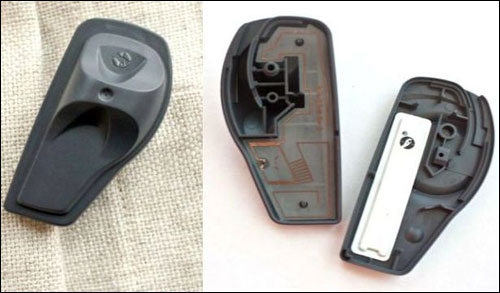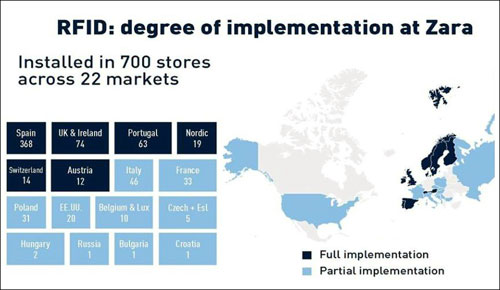Jul 17, 2014At Inditex's Annual General Meeting, held on Tuesday, Pablo Isla, the chairman and CEO of the Spain-based multinational clothing retailer, unveiled his company's ambitious expansion plans for radio frequency identification. One of the world's largest fashion groups, Inditex operates more than 6,300 store locations worldwide, and its brands include Zara (its biggest division), Massimo Dutti, Bershka, Pull and Bear and Stradivarius. The group owns the majority of its stores, and designs and manufactures almost all of its clothing.
Isla reported that RFID is already in operation at all of Zara's distribution centers and at more than 700 Zara stores within 22 countries. He added that his company expects to have the technology installed at all 1,991 or so Zara stores by 2016, with plans for a gradual rollout across the rest of its chains.
"This is a very ambitious project—a project that we've been working on for many years—on which we've made a very significant investment," Isla stated. "The implementation pace is about 500 stores a year, and at the end of 2014, we will have implemented it in a thousand stores."
The RFID technology, the company reports, makes distribution more efficient and in-store garment inventory counts more accurate, while also improving customer service. The retailer employs RFID tags embedded in the electronic article surveillance (EAS) security tags. According to Isla, each garment is fitted with a reusable RFID-enabled EAS tag, encased in hard plastic, and encoded at the distribution center. Thus, when the DC sends one of its biweekly shipments of clothing to a store, an employee at that location can use a handheld reader to identify the arriving goods and verify the shipment's receipt.

"When it gets to distribution center, all the information is codified so that when the garment is received in the store, just by reading it you know exactly what garment it is, whether it should be kept in the store room or in the sales area. It facilitates inventory management; it facilitates replenishment of the clothes," Isla explained. "It also enhances customer service, because the stores are better stocked and when a customer asks us for a garment—thanks to the RFID label and thanks to the use of iPods by our employees—you can identify what garment it is, whether it is available or not, whether it is in the storeroom of the store or not. If it is in the storeroom, then it can be given to the customer immediately. If not, you can tell the customer whether the garment is available in a nearby store, or offer the possibility of buying the garment online, and they can choose if they want to have it delivered at home or the nearest store."
The company has already implemented RFID at all of its stores throughout Spain, the United Kingdom, Ireland, Portugal, Norway, Sweden, Finland, Switzerland and Austria. It has also already deployed the technology at some of its stores in Italy, France, Poland, the United States, Belgium, Luxembourg, the Czech Republic, Slovakia, Hungary, Russia, Bulgaria and Croatia. By the end of 2014, Isla said, the firm expects to add Hungary, Poland, Belgium, the Czech Republic, Slovakia, Bulgaria, Croatia and Serbia to the list of countries in which all of its Zara stores have fully implemented RFID. By year's end, the company also expects to have added Canada, Greece, Mexico and Romania to the list of countries in which it has partially deployed the technology.



